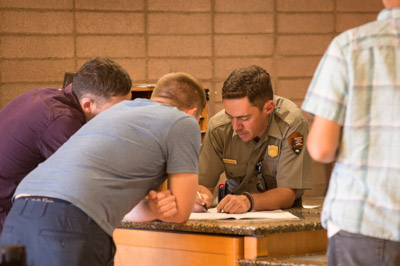Last updated: March 3, 2022
Lesson Plan
Extreme Temperatures: Post-Virtual Trip

- Grade Level:
- Upper Elementary: Third Grade through Fifth Grade
- Subject:
- Science
- Lesson Duration:
- 90 Minutes
- Common Core Standards:
- 3.SL.5, 4.SL.5, 5.SL.5, 3.W.1, 3.W.1.a, 3.W.1.b, 3.W.1.c, 3.W.1.d, 3.W.2, 3.W.2.a, 3.W.2.b, 3.W.2.c, 3.W.2.d, 3.W.3, 3.W.3.a, 3.W.3.b, 3.W.3.c, 3.W.3.d, 3.W.4, 3.W.7, 4.W.1, 4.W.1.a, 4.W.1.b, 4.W.1.c, 4.W.1.d, 4.W.2, 4.W.2.a, 4.W.2.b, 4.W.2.c, 4.W.2.d, 4.W.2.e, 4.W.3, 4.W.3.a, 4.W.3.b, 4.W.3.c, 4.W.3.d, 4.W.3.e, 4.W.4, 4.W.7, 5.W.3, 5.W.3.a, 5.W.3.b, 5.W.3.c, 5.W.3.d, 5.W.3.e, 5.W.4, 5.W.7
- Additional Standards:
- Next Generation Science Standards: K-ESS2-1, K-ESS3-2, 3-ESS2-2
- Thinking Skills:
- Remembering: Recalling or recognizing information ideas, and principles. Understanding: Understand the main idea of material heard, viewed, or read. Interpret or summarize the ideas in own words. Applying: Apply an abstract idea in a concrete situation to solve a problem or relate it to a prior experience. Creating: Bring together parts (elements, compounds) of knowledge to form a whole and build relationships for NEW situations. Evaluating: Make informed judgements about the value of ideas or materials. Use standards and criteria to support opinions and views.
Essential Question
Why is it important to learn about and to predict the weather?
Objective
Students will be able to:
• Evaluate poor and favorable weather conditions of an area.
• Plan and write a letter that tells others about their research.
• Illustrate and present research findings to peers.
• Defend and justify claims for the usefulness of trip planning items under certain weather conditions.
Background
Death Valley National Park is known as the land of extremes: one of the hottest, driest, and lowest places on Earth. The park drops 282 feet below sea level (-86m) and rises to 11,049 feet (3,368m) above sea level. Geographically, it is in a rain shadow, which means the park experiences the orographic effect lending to extreme temperatures and a dry, barren landscape. These factors are the ingredients to a recipe for an area with extreme temperatures.
Preparation
Download all materials listed under "Lesson Materials." Gather, in addition:
-
Web-enabled laptop or computer for each student
-
Internet connection
-
Lined paper
-
Pencil
-
Heavy paper for art canvas
-
Scrap paper
-
Assortment of old magazines
-
Scissors
-
Glue
-
Tape
-
Colored pencils
-
Markers
-
Crayons
-
Paint
-
Paint brushes
Materials
Review the example letter with students.
Lesson Hook/Preview
Ask students, “How did today’s weather influence your plans for the day?”
Have them discuss with a partner. After five minutes of partner discussion, ask for volunteers to share.
Inform students they will plan a trip with friends or family members to their favorite destination.
Procedure
Planning a Trip
Students will research and present the conditions of their chosen location. Topics students should conduct research on include:
-
Destination and why it was selected
-
Time of year for their visit
-
Weather conditions of the area (poor and favorable)
-
Activities to do
-
What to bring
Have students write a letter to a friend or family member on how they can prepare for their upcoming trip using the information they researched.
After writing their letter, have students create a piece of art (collage, drawing, painting, etc.) that illustrates elements from their letter. Students should be able to defend components in their artwork with evidence and/or reasoning based on their research during their presentation.
Assessment Materials
-
How would students’ plans change if weather conditions worsened/improved?
-
What extreme weather conditions can students expect at their destination?
Rubric/Answer Key
Post-Virtual Trip rubric for Death Valley's "Extreme Temperatures" distance learning program.
